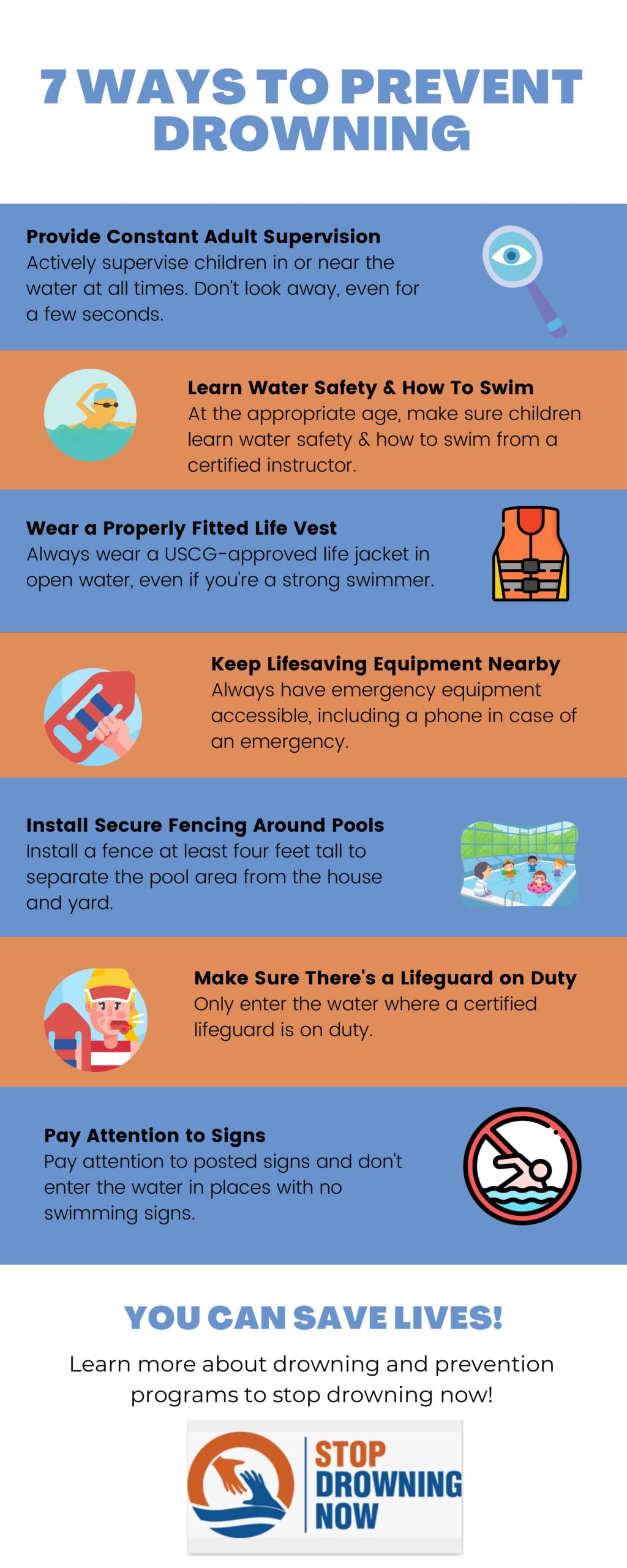Every winter, the ice that forms on bodies of water contributes to practical and recreational activities. For example, ice roads in the northern regions of Canada help alleviate isolation. Areas that experience frigid winter weather are also meccas for ice fishing, ice skating, and hockey — popular pastimes that include an element of danger when the ice breaks.
Most people think drowning happens only in summer or in warm places. But the truth is that drowning can occur in any season, making it a year-round threat. The number of winter drownings has grown over the past several years. Researchers attribute the increase to climate change, which affects when it’s safe to be on the ice at a time when many people participate in activities that put them at risk of drowning.
Cold Water Drowning Is Complicated by Hypothermia
Even in places where ice cover has been stable and predictable for generations, no ice-covered body of water is without risk. Falling through the ice is especially dangerous with cold water temperatures that can lead to hypothermia.
Hypothermia happens when your body loses heat faster than it can produce it. As your body temperature drops, your heart, brain, and internal organs cannot function. Hypothermia begins to set in when a person’s body temperature drops from an average of 98.6 degrees to about 95 degrees Fahrenheit. Low body temperature affects the brain.
To suffer from hypothermia, a person doesn’t have to ber. However, even if only part of their body is submerged, they can experience muscle cramps, pulling them under as their muscles tighten, or even rapid muscle degradation — a phenomenon known as rhabdomyolysis (or “rhabdo”).
Cold shock is another risk in the winter, and it can happen to anyone entering cold water. A sudden gasp reflex causes shock, leading to a loss of breath, reduced muscle control, and panic, which can incapacitate a person swimming in frigid waters. For example, once cold shock sets in, taking life-saving actions like treading water becomes more difficult.
5 Tips To Survive If You Fall Through the Ice
Understanding what to do if you fall through the ice is the best way to prevent drowning.
- Try Not To Panic
If your head goes under the water, open your eyes and follow the light to bring your head back up above the surface of the water. Take slow, deep breaths once your head is above the water so you don’t hyperventilate, which triggers a stress response that can override your brain’s capacity to make rational decisions. If someone is nearby, call to them so they can help you out or call for help.
- Keep Your Clothes On
It may seem counterintuitive to not shed your heavy winter clothing, but it can trap air that provides buoyancy, so don’t remove your clothing if it’s not necessary.
- Get Rid of Any Heavy Equipment
It’s important to discard any heavy, cumbersome things you are carrying, like a backpack or skis, so they don’t pull you under. However, if your backpack contains useful items like dry clothes or a lighter and you can safely throw it onto solid ground, try to do that so you can use it later.
- Pull Yourself Out
If you’re able to remain calm, tread water and find the hole where you fell through. There’s a good chance that the surrounding ice you were standing on before you fell will be thicker and more solid, making it possible to use your elbows to pull yourself out of the water and onto the ice. First, pull your torso onto the ice, then swing out your legs one at a time.
Once you’re out of the water, don’t try to immediately stand because you may fall through again. Instead, remain lying horizontally on the ice, so your weight is spread out over a larger surface, and then roll away from the hole until it’s safe to stand up.
- Get To Safety and Get Warm
Find shelter as quickly as possible. Ideally, find an indoor space like a building or vehicle; however, a rock or tree that shelters you from the wind will work in a pinch. That’s important because a cold wind chill will increase your risk of hypothermia.
It’s essential to start warming up quickly, but you must do it carefully. First, immediately remove your wet clothes ,so you don’t continue to freeze, and put on dry clothes if possible. If you can, place something between you and the cold ground like a blanket or backpack.
Resist the temptation to submerge yourself in warm water since it can induce heart arrhythmia. If you have access to a heat source, like a hot water bottle or heating pad, wrap it in something first before applying it directly to your skin. Seek medical attention as soon as possible.
Everyone Can Help Prevent Drowning
Don’t let the cold weather deter you from enjoying your favorite activities — just be aware that drowning can and does happen in winter, too. Follow the above steps to ensure that winter activities remain fun and don’t end in tragedy.





